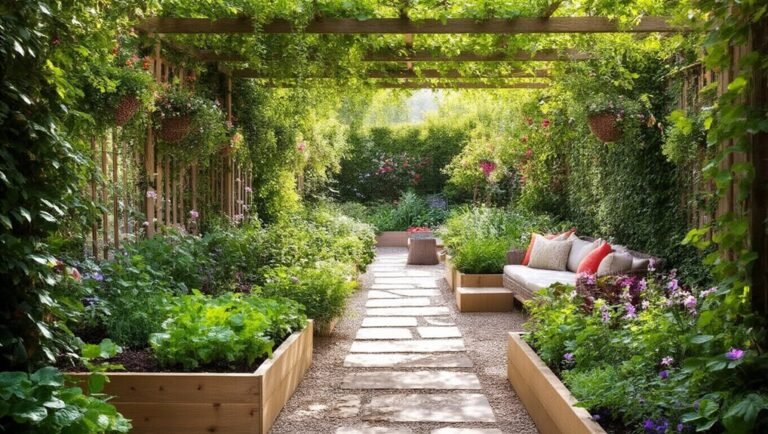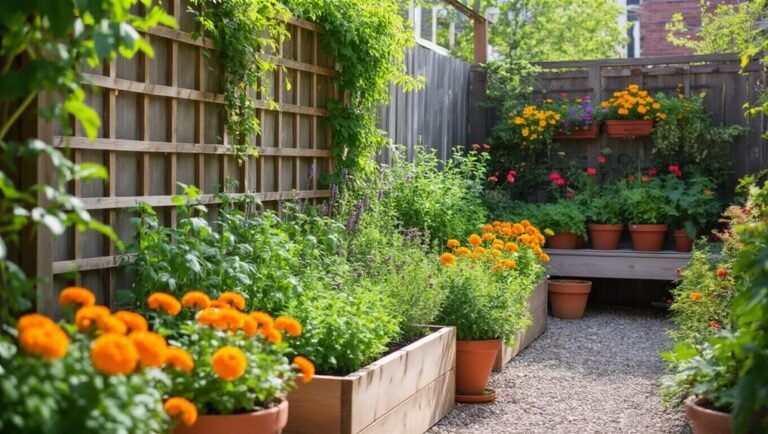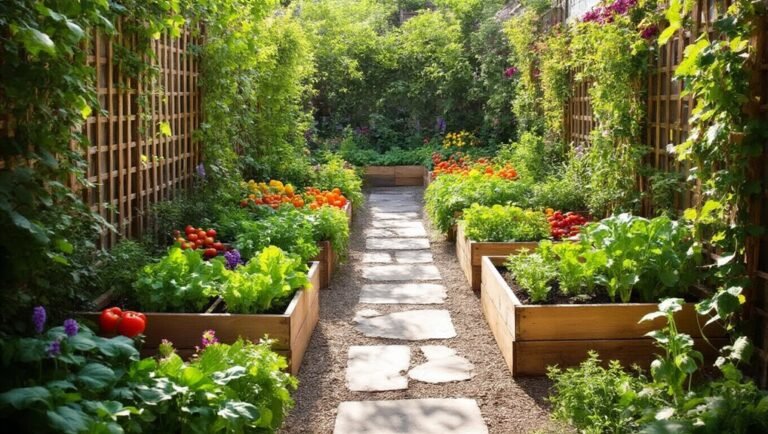To grow a garden, start by choosing the right location with plenty of sunlight and good drainage. Next, pick plants that suit your space and climate. Prepare your soil by clearing debris and testing pH levels. When planting, make sure to follow proper depth and spacing guidelines. Finally, maintain your garden with regular watering, weeding, and harvesting. Keep going, and you’ll discover even more tips for a thriving garden that yields beautiful plants and delicious vegetables.
Key Takeaways
- Choose a sunny, well-drained location with rich soil for optimal plant growth.
- Select plants suited to your climate, space, and gardening goals for best results.
- Prepare soil by clearing debris, aerating, and testing pH before planting.
- Plant at the correct depth and spacing, and ensure proper watering and mulching.
- Regularly maintain your garden by weeding, monitoring for pests, and rotating crops.
Choosing the Right Location for Your Garden
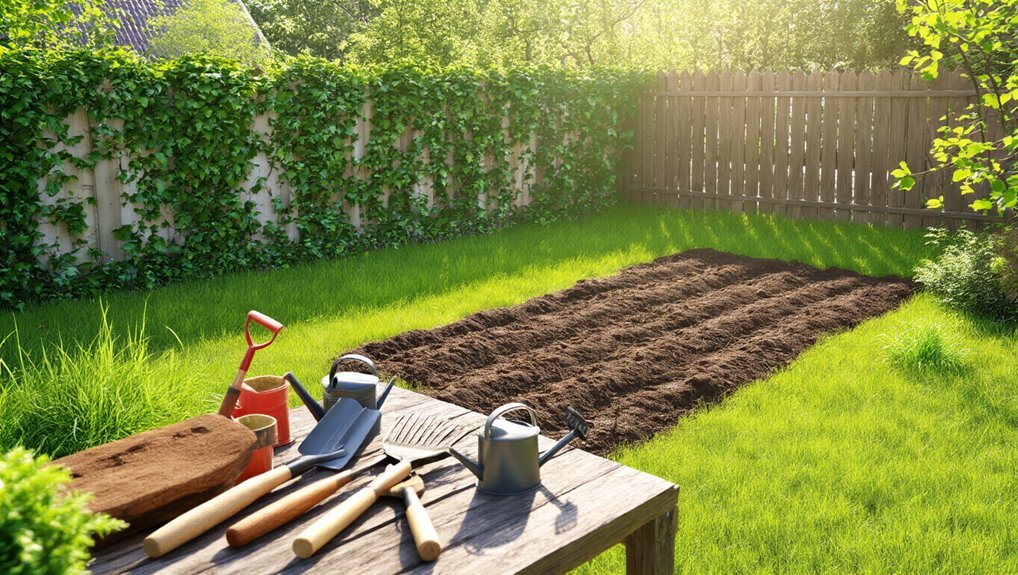
Choosing the right location for your garden is crucial for its success.
Start by evaluating sunlight; most plants need at least six hours of direct sunlight daily. Look for a spot that’s free from shade cast by trees, buildings, or fences. For climbing plants and vegetables like beans or cucumbers, incorporating trellis netting can maximize vertical space and improve yields.
Next, consider drainage; your garden shouldn’t sit in a low area where water collects. A well-drained area promotes healthy root growth.
You’ll also want to assess soil quality; rich, loamy soil is ideal for growing a variety of plants.
Finally, think about accessibility; you’ll need to reach your garden easily for maintenance and harvesting.
To help protect your plants from pests and environmental stress, you might consider using garden netting as a practical solution for safeguarding your crops.
Selecting Plants That Suit Your Space
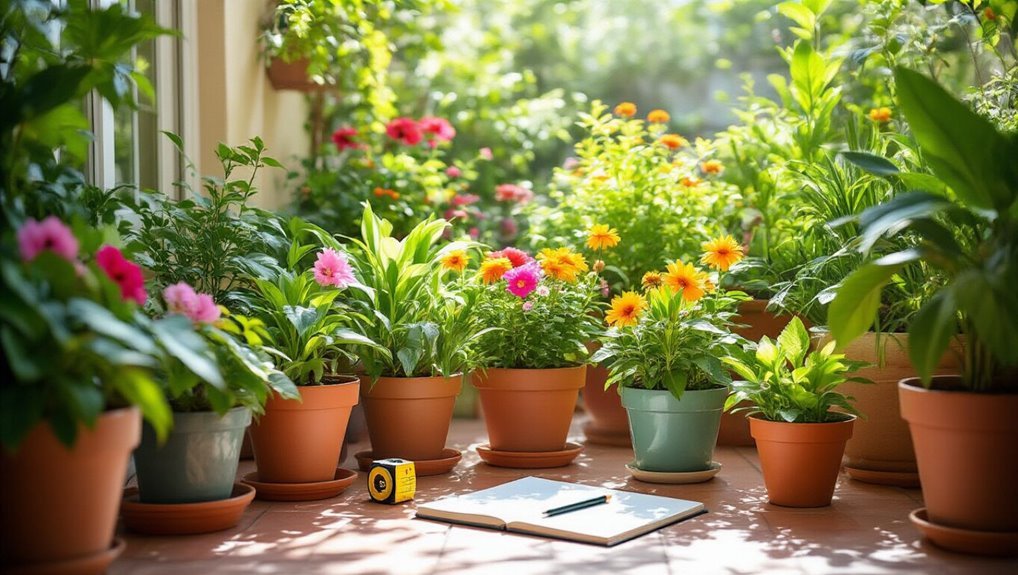
Once you’ve found the perfect spot for your garden, it’s time to select plants that match your space. Start by considering the amount of sunlight your area receives. Some plants thrive in full sun, while others prefer partial shade.
Next, think about your climate and hardiness zone. It’s crucial to choose plants that can withstand your local weather conditions. Healthy growth also depends on plant food, which provides essential nutrients to support your plants throughout the season.
Also, consider the size of your garden. If you have limited space, opt for compact varieties or vertical gardening options.
Don’t forget about your gardening goals—whether you want flowers, vegetables, or herbs. Lastly, choose plants that complement each other in color, texture, and growth habit. This will create a harmonious and visually appealing garden that you’ll love to maintain!
For a unique and beautiful addition, consider growing edible flower seeds to enhance both the look and taste of your garden.
Preparing the Soil for Planting
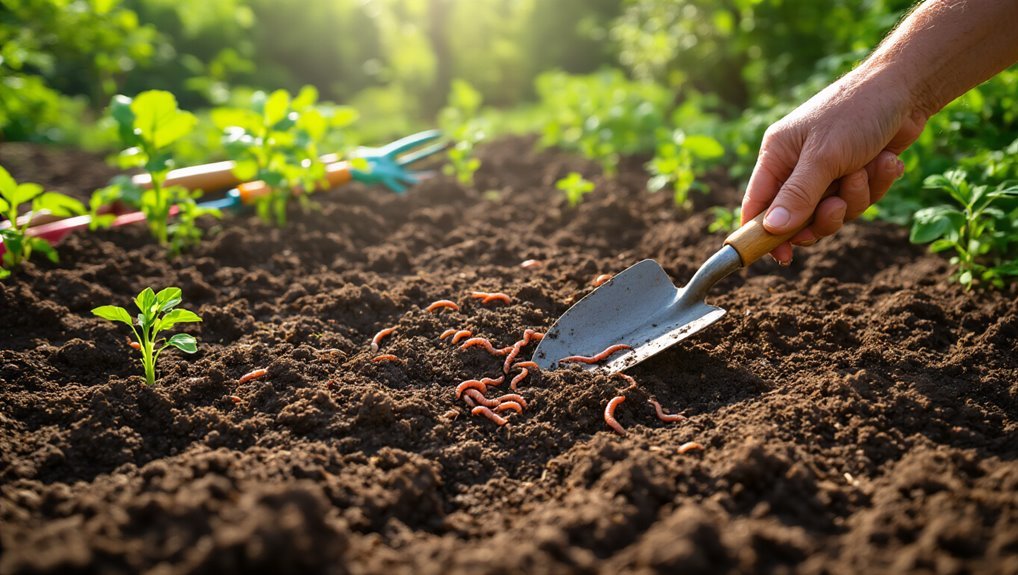
Preparing your garden soil is a crucial step that can significantly impact plant growth.
Start by clearing the area of any weeds, rocks, or debris. Next, use a garden fork or tiller to break up the soil, allowing for better aeration and drainage. Applying a layer of mulch can help suppress weeds and maintain soil temperature, further supporting healthy plant development.
Test the soil’s pH level; most plants thrive in slightly acidic to neutral soil (pH 6.0-7.0). If needed, amend your soil with organic matter like compost or well-rotted manure to enrich its nutrients. This not only improves soil structure but also benefits your plants.
For added soil health and moisture retention, consider using organic mulching materials such as straw to cover the surface after planting.
Finally, level the soil with a rake, ensuring it’s smooth and ready for planting. With well-prepared soil, you’re setting the stage for a thriving garden.
Planting and Caring for Your Garden
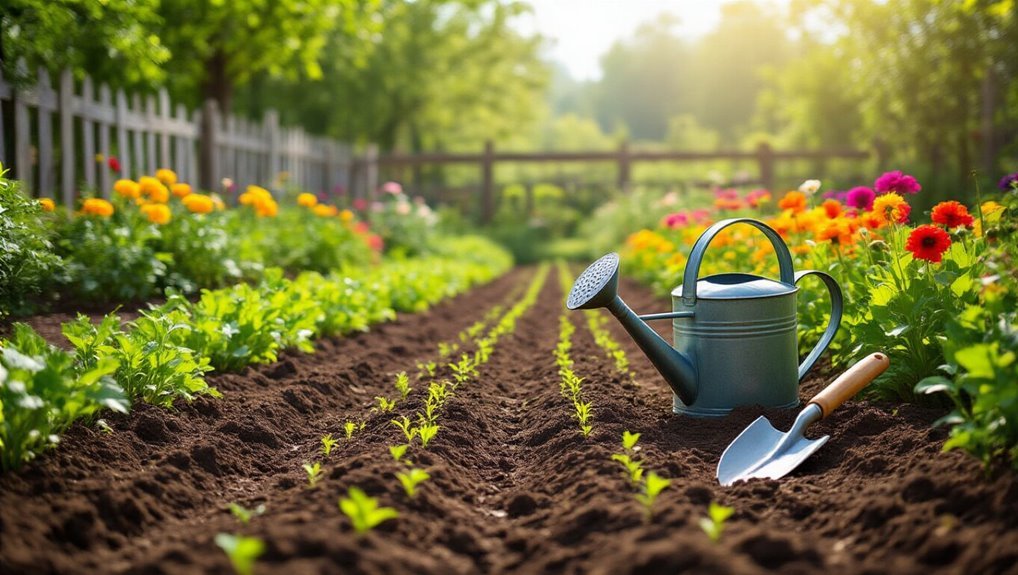
As you begin planting your garden, it’s essential to consider the specific needs of each plant. This ensures they thrive in their new environment. By using outdoor composting systems, you can create nutrient-rich compost to further enhance your garden’s soil quality.
Start by planting at the right depth and spacing, as overcrowding can hinder growth. Water your plants adequately, but avoid overwatering, which can lead to root rot.
Here are some key care tips:
- Mulch: Apply a layer of mulch around your plants to retain moisture and suppress weeds.
- Fertilize: Use organic fertilizers to provide essential nutrients throughout the growing season.
- Prune: Regularly trim dead or yellowing leaves to encourage healthy growth and air circulation.
To enrich your soil naturally, consider adding nutrients with compost bins, which help turn kitchen and garden waste into valuable compost for your plants.
Harvesting and Maintaining Your Garden
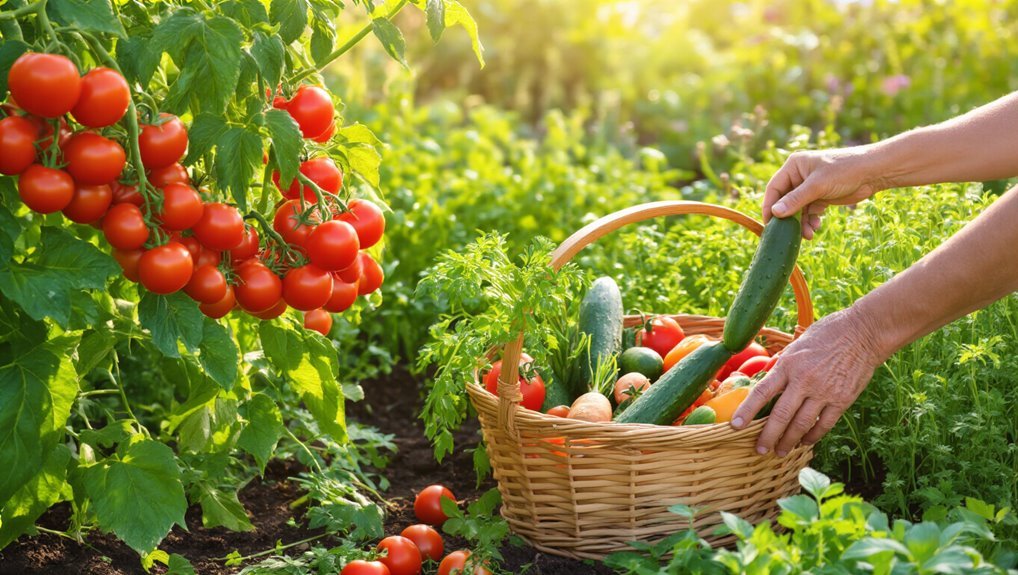
While you may be eager to enjoy the fruits of your labor, knowing when and how to harvest your crops is crucial for maximizing their flavor and yield.
Check your plants regularly, as different veggies have unique signs for ripeness. For example, tomatoes should be fully colored, while zucchini should be picked when they’re still small. Use a sharp knife or garden shears to avoid damaging the plant.
After harvesting, maintain your garden by regularly weeding, watering, and monitoring for pests.
Mulching can help retain moisture and suppress weeds. Additionally, consider rotating your crops each season to promote soil health.
With consistent care, you’ll keep your garden thriving and enjoy bountiful harvests year after year.
Happy gardening!
Frequently Asked Questions
How Much Sunlight Do Different Plants Need Daily?
Different plants thrive in varying sunlight conditions. Some need full sun, around six to eight hours daily, while others prefer partial shade or dappled light. Understanding these needs helps you create a flourishing garden.
Can I Use Kitchen Scraps for Composting?
Absolutely, you can use kitchen scraps for composting! Just toss in veggie peels, coffee grounds, and eggshells. It’ll enrich your soil and reduce waste, making your gardening efforts even more rewarding and sustainable. Happy composting!
What Tools Are Essential for Beginner Gardeners?
When you’re ready to dance with dirt, grab a trowel, pruning shears, and a sturdy spade. A watering can and gloves will keep your hands clean while you nurture nature’s beauty. Let the fun begin!
How Do I Prevent Pests in My Garden?
To prevent pests in your garden, you’ll want to use companion planting, introduce beneficial insects, and regularly inspect your plants. Also, keeping your garden clean and removing debris can help reduce pest attraction.
When Is the Best Time to Start Planting?
When you’re eager to plant, think of it like catching the perfect wave. Timing’s everything! Generally, spring’s ideal for most crops, but check your local frost dates to ride the season’s rhythm effectively.
Conclusion
Now that you’ve got the basics down, think of your garden as a canvas waiting for your unique touch. With the right location, suitable plants, and a little care, you’ll cultivate not just flowers or veggies, but a vibrant piece of nature that reflects your personality. Remember, gardening is a journey—each seed you plant is a step towards a beautiful masterpiece. So roll up your sleeves and watch your garden thrive, one bloom at a time!
